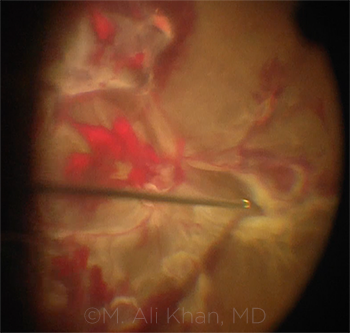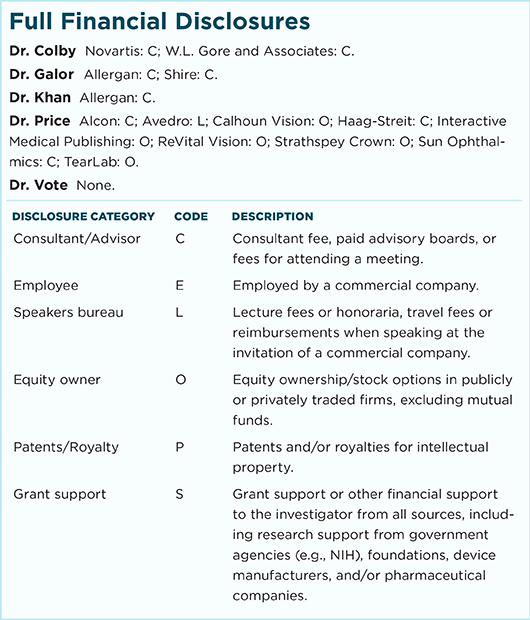Download PDF
Studies will have to confirm whether the smallest of small-gauge vitrectomy instrumentation is better than earlier generations of fine-gauge instruments. For now, a study shows that the 27-gauge pars plana vitrectomy (PPV) system for posterior segment disease is at least as safe and effective as larger-gauge equivalents.1
The retrospective interventional case series involved 360 patients (390 eyes) undergoing 27-gauge PPV (Constellation Vitrectomy 27+ Total Plus Pak, Alcon). “Surgical outcomes were comparable to the initial experience with 23- and 25-gauge instruments, and no new safety concerns were identified at follow-up of at least 1 year,” said M. Ali Khan, MD, at the Doheny and Stein Eye Institutes in Los Angeles.
Dr. Khan stressed the importance of a study like this for yielding “real-world outcomes.” Surgeons decided which of some 5,000 vitrectomy cases presenting during the study period would undergo 27-gauge PPV. The most common indication was epiretinal membrane (n = 121), followed by vitreous floaters (n = 69) and diabetic tractional retinal detachment (n = 49).
 |
IN ACTION. The 27-gauge device in use during repair of a tractional retinal detachment.
|
The findings. Across all indications, mean visual acuity improved from 20/105 to 20/50. Postoperative complication rates were low, the most common being transient ocular hypertension (n = 44). Other complications included vitreous hemorrhage, transient hypotony, and cystoid macular edema. Overall, 21% of eyes underwent at least 1 additional intraocular surgery during follow-up, most commonly for cataract extraction.
Questions remain. It’s still unknown whether a significant difference exists among outcomes using the various small-gauge instruments, but some cases might lend themselves to particular instrumentation, Dr. Khan said. “The 27-gauge system may be preferred in cases with extensive membrane dissection, such as diabetic tractional retinal detachment, during secondary intraocular lens placement, or in situations when biopsy is needed.” He added, “In cases when silicone oil is needed or the vitreous/media to be removed is dense, as in a chronic vitreous hemorrhage, a larger-gauge system may be preferred for the increase in flow rate.”
An Alcon-sponsored study comparing outcomes in cases randomized to 23-gauge or 27-gauge instrumentation, now in the data analysis phase, may provide more definitive answers.
In the meantime, said Dr. Khan, “I think each of the 27-, 25-, and 23-gauge systems can be used effectively for the surgical management of retinal disease.”
—Miriam Karmel
___________________________
1 Khan MA et al. Ophthalmology. Published online Nov. 13, 2017.
___________________________
Relevant financial disclosures—Dr. Khan: Allergan: C.
For full disclosures and disclosure key, see below.

More from this month’s News in Review